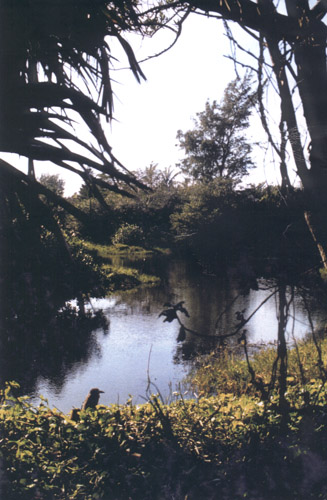Somerset Long Bay West
Long Bay Road, Somerset
Acreage: 2.71 acres,
Acquired:
Purchased, 1971/72
Special Features:
Visual access only
This reserve was acquired as an abandoned garbage tip and restored as a fresh water mangrove pond habitat. Common Gallinule, American Coot, Pied-billed Grebe, Yellow-crowned Night-Heron and Green Heron have all nested here. Purple gallinule have been seen. The pond can be viewed from the perimeter fence. Because of its location at the north-west corner of Bermuda, newly arrived migrants, including rarities, are often first spotted here.
Originally a marsh behind Somerset Long Bay beach, the site had been filled in with garbage in the early 20th century. After it was purchased in two parts in the early 1970s, the pond was re-excavated, leaving islands where healthy stands of mangroves had survived. The excavated material, a mixture of bottles, rusted metal, rubble, soil and peat, was used to form a level dyke north and east of the new one-acre pond. The pond turned out to be fresh rather than brackish water, despite its proximity to the beach. After it was deepened in 1979 to prevent it being choked by sheathed paspalum grass, it developed a rich freshwater marsh community with fish and invertebrate life to support waterfowl. In the first decades of the 21st century the reserve was overrun by invasive vines and cow cane, which killed several mature trees. A major restoration took place in 2020/21 to remove the invasive species and replant with natives and endemics.


